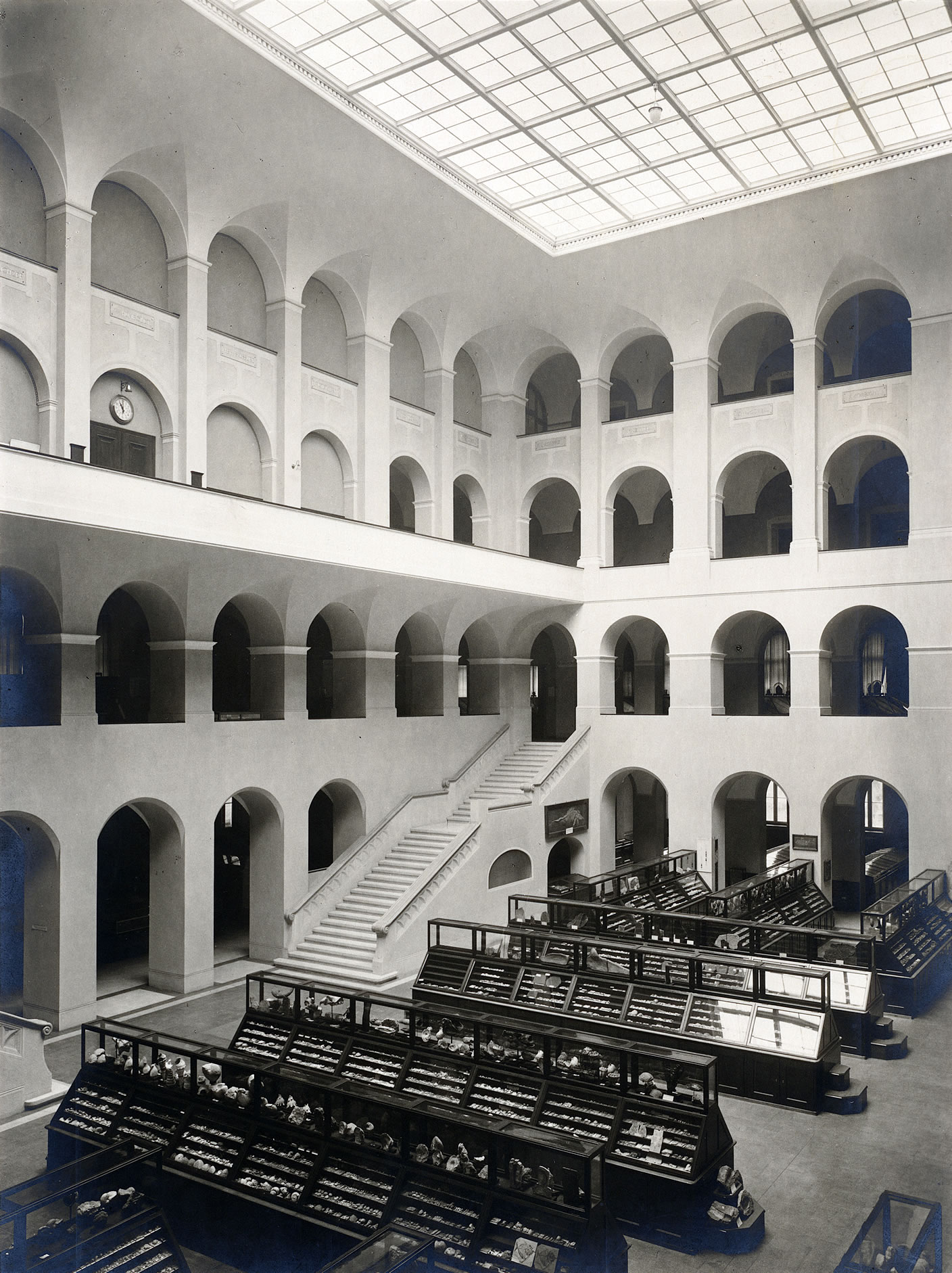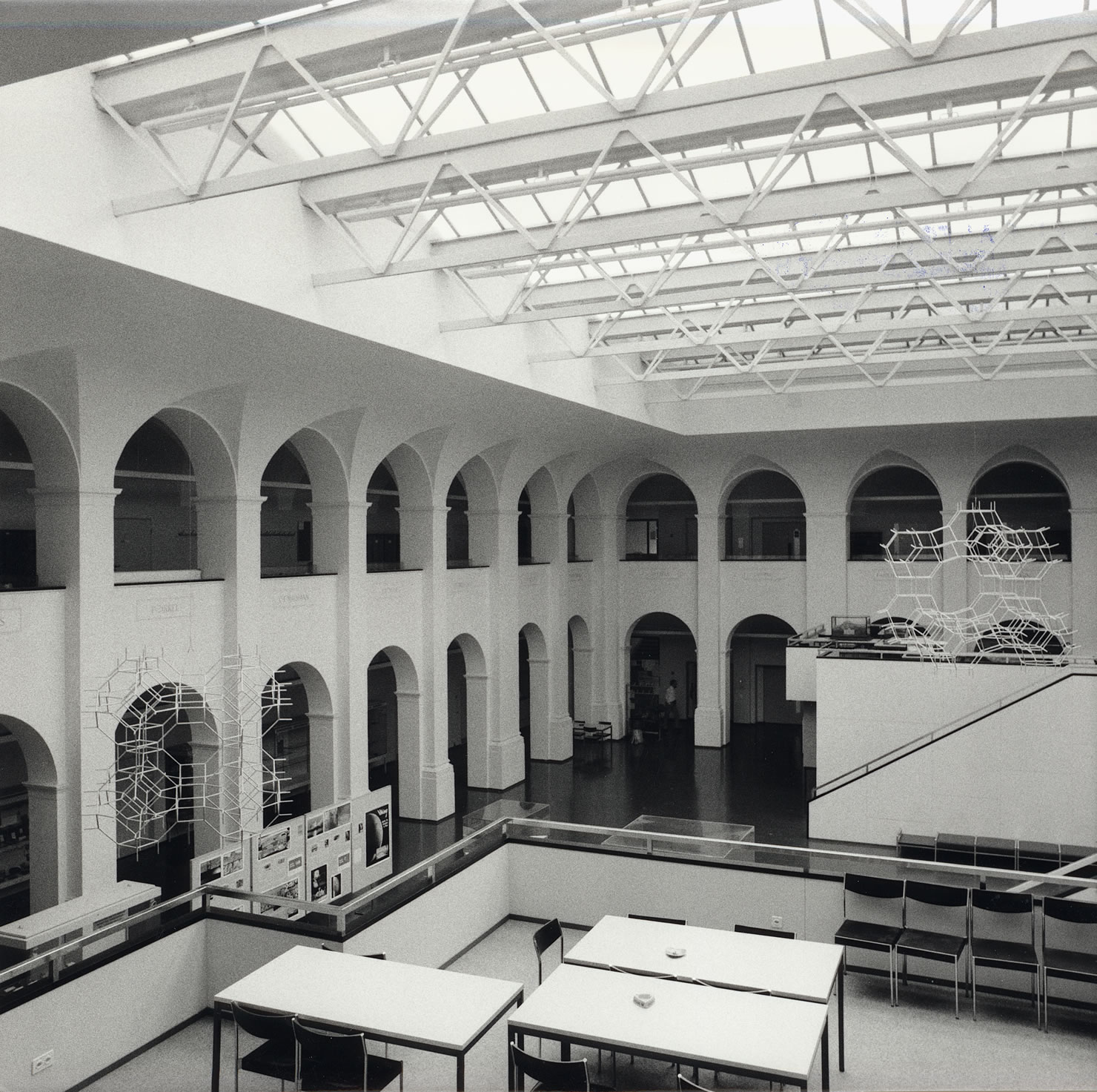History
Beginnings of the geological-mineralogical collection
The oldest mineral-, rock- and fossil-specimens of the earth science collections are from the 'Naturalien-Cabinett' of the city of Zurich. They were, in part, collected by the early naturalists Conrad Gessner (1516 to 1575) and Johann Jakob Scheuchzer (1672 to 1733). Since 1746 the 'Naturforschende Gesellschaft' in Zurich gathered further material of interest. In 1838 the collections were sold to the canton of Zurich and they subsequently became part of the University of Zurich. The first professor of geology Arnold Escher (1807 to 1872) took a great interest in the improvement of these collections.
In 1859 the first contract between the canton of Zurich and the Swiss government was signed, the purpose of which was to create a common administration for the collections. In 1905 a second contract was signed between the city of Zurich, the canton of Zurich and the Swiss government. According to this 'Special Contract', the geological-mineralogical collections were to become part of the ETH Zurich. An additional agreement in 1909 stated that part of the palaeontological material (mainly vertebrates) was to be acquired by the University of Zurich.
The building of the Department of Earth and Planetary Sciences
In 1916 the local architect Gustav Gull erected the new building of the earth sciences of the ETH Zurich (NO-building). The building was characterized by a spacious, four-floored inner hall (quadrangle) and accommodated, shortly after its opening, the earth science collections of the ETH. Long rows of dark-wooded showcases occupied the entire hall where the majority of the collection could be stored and exhibited.
Increased space requirements during the sixties led to fundamental changes in the building under the direction of the architect Alfred Roth. A large lecture hall, auditoriums and two more floors on top of the building radically changed the character of the original architectonic structure. During this reconstruction phase the collection was temporarily stored elsewhere and only in 1980 a new exhibition was opened in the hall of the E-floor and in the peripheral galleries. The remaining part of the hall was used for special, temporary exhibitions.
Construction of the permanent exhibition focusTerra
One of the main goals of the architects Itten-Brechbühl during the last renovation (2005 to 2009) of the whole building was to allow for a new permanent earth science exhibition. This new exhibition was designed by Holzer Kobler Architekturen.
The heart of the exhibition is the 'tower', which dominates the inner hall of the building and which is in stark contrast to the surrounding quadrangle. There are displays on three open levels, which are filled with showcases. At the same time, the 'tower' is connected to the surrounding hallways of the renovated NO-building.
Further exhibition areas are offered to the visitor: a unique collection of mountain terrain models (relief maps), a sphere of two meter diameter where the earth and its processes can be projected interactively and in three dimensions, as well as a series of video terminals provided in the hallways, which give an insight into the current research projects of the Department of Earth and Planetary Sciences at ETH Zurich.

